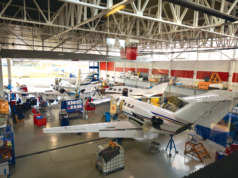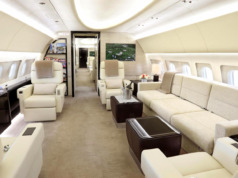Your brand-new aircraft comes with a warranty. But over time, aircraft maintenance will account for as much as 35% of your aircraft’s annual operating budget. Unlike some other costs, you have the ability to control this expense by using an Hourly Cost Maintenance Program (HCMP).
Introduced by the engine and airframe Original Equipment Manufacturers (OEMs) to demonstrate their confidence in the cost to maintain their product, HCMPs today are nearly a staple of aircraft ownership. In fact, the value of your aircraft may be affected negatively if you forego the coverage they provide.
HCMP coverage is available from all major airframe, engine, auxiliary power units (APUs), and avionics OEMs, and from one independent provider: Jet Support Services, Inc. (JSSI).
“Perpetual aircraft maintenance programs have been critical in maintaining aircraft value through these tough times, particularly in the long-range, large-cabin aircraft segment,” says Lou Seno, ASA (Accredited Senior Appraiser with the American Society of Appraisers), and JSSI’s Chairman Emeritus.
How Does HCMP Coverage Work?
The cost to maintain an aircraft varies by make, model, and age. Its maintenance program is based on three parameters: flight hours, landings (also referred to as “cycles”), and time (due to calendar-related inspections). Scheduled maintenance will include “cost spikes,” such as major airframe maintenance, and engine or APU overhaul. Additionally, scheduled maintenance costs become less predictable as an aircraft ages, and unscheduled — sometimes costly — maintenance events can occur at any time.
For example, the cost to remove an engine at a remote rural or international location, transport it to an appropriate maintenance facility, transport and install a loaner engine, and then reinstall the repaired engine, could run into millions of dollars.
HCMPs help assure cost stability, by providing predictable, budgeted scheduled maintenance, while concurrently eliminating unexpected repair costs. The owner or operator pays a set fee per hour of operation, based on defined usage parameters, for coverage of certain major components (e.g. engines, avionics, APU), or virtually the entire aircraft.
HCMP coverage also may include manufacturer’s service bulletins, FAA Airworthiness Directives, loaner engines, airframe components, component removal and reinstallation, and passenger cabin equipment. It can be extended to include Life-Limited Components, shipping and logistical support, and even provide a troubleshooting labor allowance.
Stephen Friedrich, Rolls-Royce VP-Sales & Marketing says, “HCMPs meet the needs of the market. Comprehensive maintenance programs, like CorporateCare®, are a cost effective method of removing operational and financial risk while increasing asset liquidity and residual value.”
In addition to assuring that adequate funds will be available when needed, HCMPs also can enhance the aircraft’s resale residual value, as well as leasing and finance terms.
John Spoor, President and CEO of SAI Valuations, a major aircraft appraisal firm, states, “An owner might not see the HCMP’s total cost reflected in the aircraft’s resale value. But in many situations, such as an engine failure in a remote locale, an HCMP returns far more than its total cost.”
“Perpetual HCMPs help ensure our investment in the aircraft we finance,” adds Jim Simpson, Managing Director Aviation & Marine Finance, First Republic Bank. “Asset Insight [a firm that specializes in grading the maintenance condition of aircraft on a standardized scale] is one way to quantify each Program’s value for our own portfolio, as well as to keep our clients informed of their HCMP equity in the aircraft.”
If you are considering an HCMP, evaluate the following:
- What maintenance events does the Program actually cover?
- What are the costs to enroll an aircraft? Is a “Buy-In Fee” required?
- What is the Program term length?
- Is it renewable and transferable (with or without a fee)?
- Does Program coverage cease past a certain aircraft age?
Even if you own a brand-new aircraft, the manufacturer’s warranty doesn’t cover scheduled maintenance or major inspections.
An Hourly Cost Maintenance Program can help you manage your maintenance budget, preserve your aircraft’s resale value, support your flight department, and provide invaluable assistance in case of a major maintenance event in a remote location. BAA
Anthony Kioussis is president of Asset Insight, LLC, which offers eValues™, an online service providing Current and Residual aircraft valuations. With 40+ years in aviation, he serves on the National Aircraft Finance Association Board of Directors.




